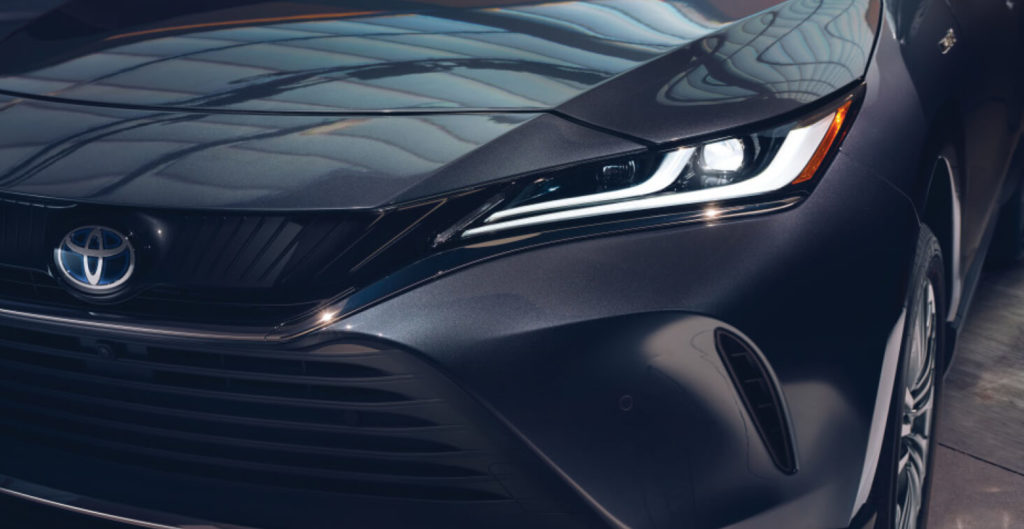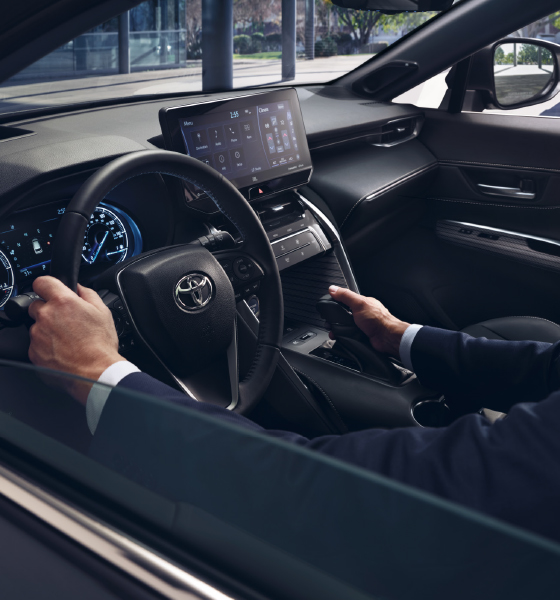
Collision Pros Magazine 2020 | ISSUE 02
2021 Toyota Venza
Understanding its new technology
One thing is constant in the automotive industry and it’s change. Every year, new models are introduced with new technology, and with those changes come new repair procedures.
Case in point: Toyota has introduced the all-new 2021 Venza, a two-row crossover with the Toyota Hybrid System II powertrain and advanced Electronic On-Demand All-Wheel Drive. It comes in three trim levels: LE, XLE and Limited.
If one comes into your facility, you need to be aware of the following features in order to make a great repair:
Top Collision Protection
Venza is built on Toyota’s New Global Architecture Platform K (TNGA-K), which is shared with the Camry, Avalon and RAV4. As such, Venza delivers the best of both worlds: sedan-like driving comfort and CUV versatility. The TNGA-K platform owes its inherent strength to the extensive use of ultra high-tensile strength steel, high-tensile strength steel, hot-stamped steel and aluminum.

Sound Reduction Measures
Drivers are attracted to the Venza because it is quiet on the road. So, if one is in an accident, you have to be aware of where sound-blocking and body sealing materials have been used. For example, sound-blocking and absorbing insulation and body sealing material are placed throughout the structure, under the carpeting and above the headliner. The materials and their placement were optimized to minimize noise in the frequencies that typically interfere with conversation.
Venza also has a floor silencer pad that is one large piece rather than separate segments. As a result, surface coverage reaches about 92 percent. Holes and gaps between parts are filled in with sound-damping material for greater road noise reduction.

Under the hood, sound-absorbing insulation around the engine compartment helps reduce intake noise by the placement of two special resonance chambers that help minimize air intake noise in the 530Hz and 650Hz ranges.
So, when a Venza is in for repairs, be sure to use the proper materials and repair techniques to ensure you maintain its quiet ride.
Hybrid Platform
The Venza only comes with a hybrid drivetrain. The hybrid battery is located under the rear seats. It also comes standard with Toyota’s Electronic On-Demand All-Wheel Drive. Instead of using a transfer case and driveshaft to deliver power to the rear wheels, Venza employs a separate rear-mounted electric motor to power the rear wheels when needed. This feature preemptively distributes up to 80 percent of driving force to the rear wheels, which helps suppress front wheel slip during off-the-line starts. This system also makes repairs easier, as you don’t have to deal with a transfer case or rear driveshaft.
Toyota Safety Sense™ 2.01 features
All 2021 Venza trim levels offer a full suite of Toyota Safety Sense 2.0 features (see the Toyota Safety Sense story to learn more about how these features function)—they include:
- Pre-Collision System with Daytime/Low-Light Vehicle and Pedestrian Detection, plus Daytime Bicycle Detection (PCS)2
- Full-Speed Range Dynamic Radar Cruise Control (DRCC)3
- Lane Departure Alert with Steering Assist (LDA w/SA)4
- Automatic High Beams (AHB)5
- Lane Tracing Assist (LTA)6
- Road Sign Assist (RSA)7
Other key features include:
- Blind Spot Monitor (BSM)8 with Rear Cross-Traffic Alert (RCTA)9
- XLE and Limited trim levels add Front and Rear Parking Assist with Automated Braking (PA w/AB) 10

In addition, the available digital rearview mirror with HomeLink universal transceiver on the new Toyota Venza helps the driver see what’s behind the vehicle. If rear passengers or luggage in the cargo area are blocking the view behind, a flip of a switch on the digital rearview mirror instantly provides the driver with a wide, unobstructed view from a rear camera.

The standard backup camera12 features projected path and dynamic gridlines, while, if equipped, an available rear Camera Cleaning System sprays washer fluid to clear away water droplets, mud, snow and snow-melting road treatments from the lens.

S-Flow Cooling Technology
If a Venza is in for a repair, you need to be aware of its variable cooling control technology, which consists of an electric water pump, electric thermostat and a fully variable oil pump. This system not only helps improve engine efficiency, it also directs air conditioning only to occupied seats, providing comfort and helping to reduce energy consumption.
Know the Venza Before Starting a Repair
Be sure to follow the recommended procedures based on the parts you’re working with to ensure you return a vehicle that looks perfect, functions as new and maintains Toyota safety standards.
Disclaimer & Footnotes
This training is just one resource available to Dealers and their associates. Collision Repair Centers are free to use or not use this resource. Of course, our dealers are responsible for all employment decisions relating to their employees including all recruiting, hiring, retention, development, discipline and termination decisions.
- Toyota Safety Sense™ effectiveness is dependent on many factors including road, weather, and vehicle conditions. Drivers are responsible for their own safe driving. Always pay attention to your surroundings and drive safely. See Owner’s Manual for additional limitations and details.
- The TSS Pre-Collision System is designed to help avoid or reduce the crash speed and damage in certain frontal collisions only. It is not a substitute for safe and attentive driving. System effectiveness is dependent on many factors, including road, weather, and vehicle conditions. Feature availability may vary by vehicle and trim.
- Dynamic Radar Cruise Control (DRCC) is designed to assist the driver and is not a substitute for safe and attentive driving. System effectiveness is dependent on many factors, including road, weather, and vehicle conditions. Feature availability may vary by vehicle and trim.
- Lane Departure Alert (LDA) is designed to read visible lane markers under certain conditions and provide visual and audible alerts when lane departure is detected. It is not a collision-avoidance system or a substitute for safe and attentive driving. System effectiveness is dependent on many factors, including road, weather, and vehicle conditions.
- Automatic High Beams operate at speeds above 25 mph. Factors such as a dirty windshield, weather, lightning, and terrain limit effectiveness, requiring the driver to manually operate the high beams. Feature availability may vary by vehicle and trim.
- Lane Tracing Assist (LTA) is designed to read visible lane markers and detect other vehicles under certain conditions. It is only operational when DRCC is engaged.
- Do not rely exclusively on Road Sign Assist (RSA). It is not a substitute for safe and attentive driving. System effectiveness is dependent on many factors, including road, weather, and vehicle conditions. Feature availability may vary by vehicle and trim.
- Do not rely exclusively on the Blind Spot Monitor. Always look over your shoulder and use your turn signal. There are limitations to the function, detection and range of the monitor.
- Do not rely exclusively on the Rear Cross-Traffic Alert system. Always look over your shoulder and use your mirrors to confirm rear clearance. There are limitations to the function, detection and range of the system.
- At speeds of 9 mph or less, Front and Rear Parking Assist with Automatic Braking (PA w/AB) is designed to assist drivers in avoiding potential collisions with nearby static objects when the vehicle is in Drive or Reverse and approaching crossing vehicles when the vehicle is in Reverse. Do not overly rely on PA w/AB. Always look around outside the vehicle and use mirrors to confirm clearance. Certain vehicle and environmental factors, including an object or vehicle’s shape, size and composition, may affect the system’s effectiveness.
- The Bird’s-Eye-View Camera does not provide a comprehensive view of the area surrounding the vehicle. You should also look around outside your vehicle and use your mirrors to confirm surrounding clearance. Environmental conditions may limit effectiveness and view may become obscured.
- The backup camera does not provide a comprehensive view of the rear area of the vehicle and you should also look around the vehicle, using mirrors to confirm rearward clearance. Environmental conditions may limit effectiveness and view may become obscured.



